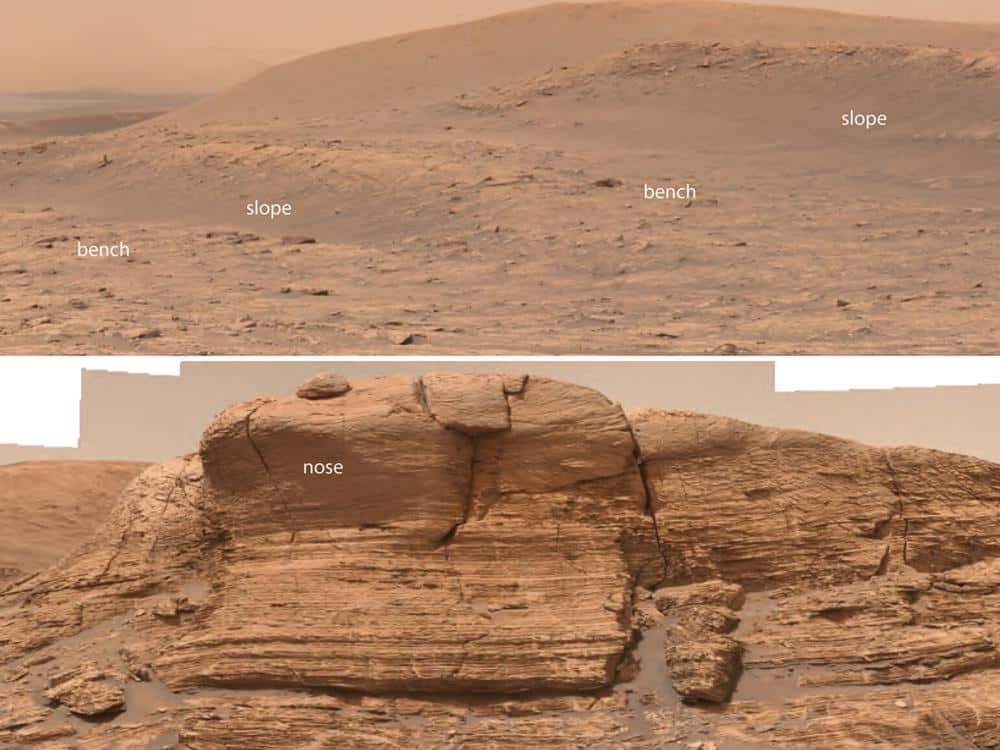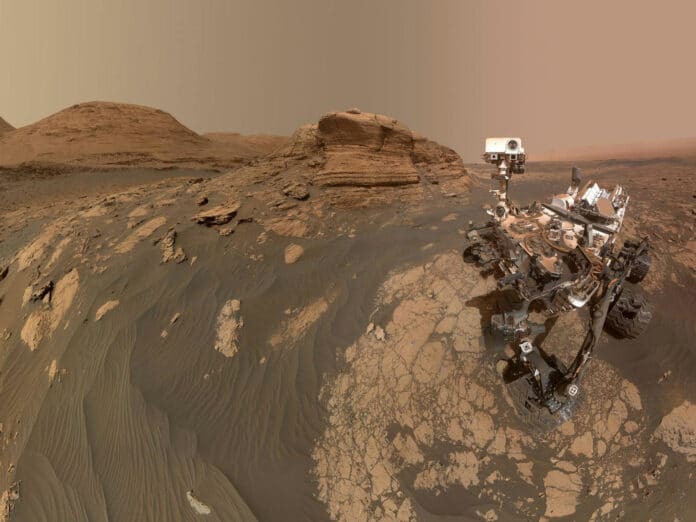Ancient river deposits exist across Mars and can be identified by erosional landforms called fluvial ridges in satellite data. Fluvial ridges take the shape of old river deposits and help us understand the history of water on Mars. However, river deposits observed by the Mars rover Curiosity are instead exposed along steep slopes, shallow benches, and short, truncated ridges we call noses.
In a study, researchers used numerical models to simulate erosion on Mars over millennia. They found that common crater formations- called bench-and-nose landforms— are most likely remnants of ancient riverbeds. For this study, scientists used data from the Curiosity rover.
The study reveals that much of the craters on Mars today could have once been habitable rivers.
Using a mix of satellite data, Curiosity images, and 3D scans of the stratigraphy (or layers of rock, termed strata, accumulated over millions of years) beneath the Gulf of Mexico seafloor, the study became the first to map the erosion of ancient Martian soil. The research produced a novel explanation for typical Martian crater forms that had never before been connected to eroded river deposits.
Benjamin Cardenas, assistant professor of geosciences at Penn State and lead author on a new paper announcing the discovery, said, “We have everything to learn about Mars by better understanding how these river deposits can be interpreted stratigraphically, thinking about rocks today as layers of sediment deposited over time.”

“This analysis is not a snapshot but a record of change. What we see on Mars today is the remnants of an active geologic history, not some landscape frozen in time.”
Fluvial ridges, which are erosional landforms, have been suggested as potential candidates for ancient river deposits in earlier investigations of Mars satellite data. The scientists discovered evidence of river deposits using data gathered by the Curiosity rover at Gale Crater instead of bench-and-nose formations, which have never been connected to ancient river deposits.
Cardenas said, “This suggests that there could be undiscovered river deposits elsewhere on the planet and that an even larger section of the Martian sedimentary record could have been built by rivers during a habitable period of Mars history. On Earth, river corridors are so important for life, chemical cycles, nutrient cycles, and sediment cycles. Everything is pointing to these rivers behaving similarly on Mars.”
Scientists designed a computer model in which they found a new use for 25-year-old scans of Earth’s stratigraphy. Collected by oil companies, the scans beneath the Gulf of Mexico seafloor perfectly compared to Mars.
The scientists used 3D scans of actual, recorded stratigraphy on Earth to recreate erosion similar to that on Mars. The simulation produced erosional Martian landscapes that resembled topographic benches and noses rather than river ridges, which were observed by the Curiosity rover inside the Gale crater.
Cardenas said, “Our research indicates that Mars could have had far more rivers than previously believed, which paints a more optimistic view of ancient life on Mars. It offers a vision of Mars where most of the planet once had the right conditions for life.”
Journal Reference:
- Benjamin T. Cardenas, Kaitlyn Stacey. Landforms Associated With the Aspect-Controlled Exhumation of Crater-Filling Alluvial Strata on Mars. Geophysical Research Letters. DOI: 10.1029/2023GL103618
